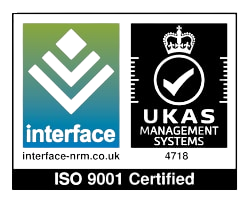Aptitude Tests | Pre-employment Assessment Guide for Recruiters 2024
Technology has transformed hiring, empowering recruiters with powerful tools to find top talent. Applying for jobs is now easier than ever, thanks to ‘easy apply’ or ‘one-click apply’ features.
However, this advancement also presents a significant problem to the talent acquisition department. As a hiring manager or HR professional, finding the best candidate among the pool of job applications is daunting, often like finding a needle in a haystack.
To avoid this issue companies use standardized assessments, such as aptitude tests, to identify the best fit for the job. These tests evaluate a candidate’s potential for success in a specific role.
With the right blend of technology and strategies, you can uncover the perfect candidate from the applicant pool.
This article highlights the transformative benefits of pre-employment aptitude assessments, showing you how they can make your hiring process a breeze.
Keep reading to find out more.
CONTENTS
- What are aptitude tests in recruitment?
- Why are aptitude tests important in recruitment?
- What are some examples of aptitude tests used in recruitment?
- How are aptitude tests scored and what are passing percentiles?
- Aptitude Tests vs. Traditional Interviews: Which Method Offers Better Predictive Accuracy?
- What are the pros and cons of implementing aptitude tests in recruitment?
- How do ongoing test validation and adaptation work in recruitment for aptitude tests?
- Why use Assess Candidates Aptitude Tests to Hire?
- Aptitude tests in recruitment- FAQs
1. What are Aptitude Tests in Recruitment?
An aptitude test is a standardized assessment to assess the cognitive skills and potential of candidates. By utilizing an aptitude test, employers can evaluate a candidate’s abilities and make informed decisions when selecting the most suitable applicants for the role.
A pre-employment aptitude test measures the ability of candidates to learn and perform required tasks to be successful in the specific work environment of your organisation. Although these assessments do not necessarily measure innate intelligence, they provide insight into whether a candidate has the necessary abilities to succeed in a given role.
Having explored the concept of aptitude tests in recruitment, we now turn our attention to their significance in the hiring process. Understanding why aptitude tests hold such importance is crucial in grasping their impact on effective candidate evaluation and selection.
Let’s now look into the key reasons why aptitude assessments are crucial in the recruitment process
Assess using our science-backed aptitude tests for your next project. Hire For Free
2. Why are Aptitude Tests Important in Recruitment?
Top 4 reasons why aptitude tests are important for the recruitment process
- Unbiased evaluation:
- Pre-employment aptitude tests are all designed in accordance with strict test procedure. All candidates are given the same test ensuring the same standards when it comes to assessing their suitability for a given role. This guarantees that each applicant is given an equal opportunity to demonstrate their skills and eliminates any prejudice or subjectivity from the hiring process.
- Reliable indicators of work success
- Recruiters can determine how likely an applicant is to perform well in the work position by evaluating their cognitive abilities, such as their problem-solving, numerical reasoning, and verbal reasoning skills. This could reduce the possibility of making a poor hire and assist you in making more informed hiring choices.
- Recognise a candidate’s strengths and weaknesses:
- The test results bring out data that can help figure out whether an applicant would fit into a specific work position well and whether they would need extra support or training.
- Save time and money
- By helping recruiters sift applicant groups, aptitude assessments can help you save time and money. You can use aptitude tests for recruitment to rapidly identify those with what it takes to succeed in the work position, saving you time from spending hours questioning applicants who may not be the right match.
- Enhance candidate experience
- By giving applicants a clear grasp of the demands and standards of the position, aptitude assessments can also improve the candidate’s experience. A candidate experience that resonates is key to building a good impression of your brand.
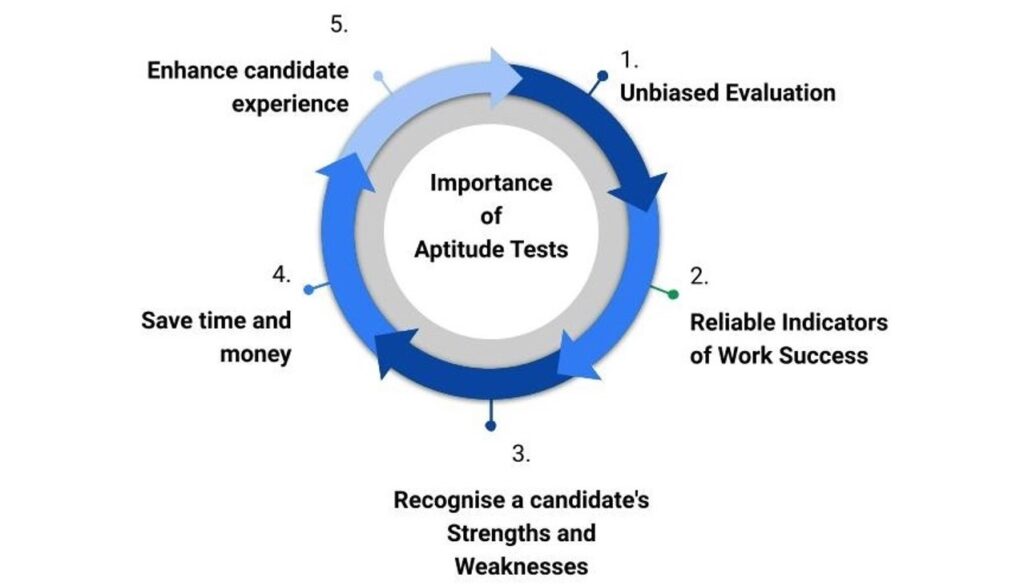
Importance of aptitude tests for recruitment
Good to know: Having an engaging assessment platform can be a quick win to help build a favourable brand impression among your candidates.
Now that we understand the importance of aptitude tests in recruitment, let’s delve into the pros and cons of implementing them. By considering the benefits and challenges, we can gain valuable insights to enhance our hiring practices.
Let’s explore the advantages and potential drawbacks of aptitude tests in recruitment.
3. What are the Pros and Cons of Implementing Aptitude Tests for Job Recruitment?
Top 5 advantages of using aptitude tests in recruitment
| Advantage of using pre-employment aptitude test | How it impacts the hiring process |
|---|---|
| Cost effective | Aptitude tests for recruitment can help find the most eligible applicants for a job, reducing the need for additional recruitment efforts and saving on advertising and candidate screening costs. |
| Unbiased | Pre-employment aptitude tests are given consistently to all applicants, guaranteeing that everyone is assessed using the same criteria. This serves to reduce differences in the recruitment procedure and reduces the possibility of bias. |
| Boost organizational diversity | Aptitude tests can be taken from anywhere allowing people from all over the world to be assessed, thus boosting potential for diversity across your organization. |
| Efficient recruitment tool | Aptitude assessments can be given swiftly and effectively, saving the HR department’s time spent interviewing and screening applicants. |
| Scientific validity | Aptitude assessments are designed based on research and psychometric principles to ensure that they accurately measure the abilities and skills that are relevant to the job. |
Good to know: According to Sartori and Pasini, 2007, the objective of an aptitude test is to assess an applicant’s ability by scoring the speed and accuracy of their answers. Using these scores, the aptitude tests allow the employer to make a more informed hiring decision based on the candidate’s performance.
As we have explored the benefits of implementing aptitude tests in recruitment, it is important to acknowledge that like any assessment method, there are also potential challenges to consider. Now, let’s delve into the disadvantages of implementing aptitude tests, ensuring a comprehensive understanding of the subject and enabling you to make informed decisions for your recruitment process.
Top 5 disadvantages of using aptitude tests in recruitment
| CONS | How it Impacts the Hiring Process |
|---|---|
| Test anxiety | Test Anxiety is a frequent challenge that applicants face while taking an aptitude assessment. It can impact candidate performance, preventing them from displaying their true ability. It can be avoided by offering them practice tests and tools, as well as straightforward instructions, support, and encouragement throughout the testing process. |
| Cheating | Cheating on aptitude tests is possible, especially if they are given remotely, which can weaken the accuracy of the results. Opt for a provider with tools to minimise cheating and strict time conditions where cheating is less impactful. |
| Captures one aspect of a candidate’s performance | Aptitude tests for recruitment do not assess a candidate’s psychological characteristics, work experience, motivation, or interpersonal skills, all of which can influence job success. An applicant may score well on an aptitude test but lack the required skills or expertise to perform well in the interview. It is important to use a range of assessments to ensure softer skills are captured to build an overall picture. |
| Time is required to design the aptitude test | The design of an aptitude test can take time and needs plenty of detail to get just right. Solve this by turning to an external provider as opted for by many organisations. |
| Not suitable for all roles | Pre-employment aptitude assessments are unlikely to be suitable for all roles. It is key to consider the nature of your role and request consultation from a trusted advisor to build your perfect assessment process. |
Having examined the pros and cons of implementing aptitude tests for job recruitment, it is crucial to explore how these tests are scored and understand the concept of percentiles. By delving into the scoring process we can gain a deeper understanding of how aptitude tests are evaluated and how they can effectively inform hiring decisions.
Let’s now explore the scoring methods and passing percentiles associated with aptitude tests in recruitment.
4. How are Aptitude Tests Scored and What are Passing Percentiles?
Since recruiters are in charge of administering the aptitude test, they can set a benchmark score or passing percentiles required for the candidates.
For example, a company may establish a passing percentile of 70%, indicating that individuals scoring at or above the 70% mark would be considered for future rounds.
You’re probably wondering what criteria you should use to determine a passing percentile.
Here are a few crucial factors that will help you to get more clarity:
- Skills required for the job
- If the job opening is for a financial analyst, a numerical reasoning test may be used to assess a candidate’s ability to analyze data and solve problems. The passing percentile for this test may be set at a level that reflects the level of analytical ability needed to be successful in the role.
- Similarly, if the job requires strong verbal communication skills, a verbal reasoning test may be used to assess a candidate’s ability to understand and interpret written information.
- Desired level of performance of candidates
- To ensure that only the highest-performing candidates are to be selected, you can set a passing percentile at 70% or 80%. This means that the candidates must score higher than the benchmark score to get selected.
- In some cases, a passing percentile may be set at 50%, depending on the number of job applications.
We recommend a lower cut-off at the 30th percentile. This helps ensure not too much weight is put on an assessment, as no method is 100% infallible. Rather, you safely sift and progress desired applicants through this method.
- Precise evaluation:
- Evaluate the exact skills necessary for the position to determine the passing percentage for the aptitude test. It’s crucial to establish a passing percentile that represents the minimum performance required to succeed, considering factors like test complexity and applicant pool size.
- For example, to simply sift a larger pool into something more manageable, you may opt for a lower cut-off as recommended above to safely sift and progress applicants.
Now that we have covered how aptitude tests are scored and the importance of passing percentiles, let’s shift our focus to the ongoing validation and adaptation of these tests in the recruitment process. Exploring this continuous process will help us understand how aptitude tests remain reliable and relevant in assessing candidates over time.
Screen candidates using aptitude tests crafted by experts. View Plans
5. How do Ongoing Test Validation and Adaptation Work in Recruitment for Aptitude Tests?
Ongoing test validation and adaptation are critical to keeping aptitude tests relevant and successful in the recruiting process. Here are some key details to consider:
- Job Analysis: This involves assessing the knowledge, skills, abilities, and other qualities (KSAOs) necessary for effective work performance. Understanding the role’s unique needs allows you to determine if the existing aptitude tests you use effectively assess those KSAOs.
- Test Review: Regularly review the content and format of aptitude tests to ensure they align with the job criteria. Assess the clarity and appropriateness of exam items, instructions, and scoring criteria. Additionally, evaluate if any updates or revisions are necessary due to industry changes, technological advancements, or evolving job duties.
- Benchmarking: Determine benchmark scores or passing percentiles by studying the performance of current employees who have excelled in their positions. To detect trends or correlations, compare their aptitude test scores to their work performance. This data can be used to help future applicants determine suitable passing scores.
- Legal Compliance: Ensure that the aptitude tests adhere to current legal criteria, such as equal employment opportunity (EEO) regulations and with the Disabilities Act. Review the tests regularly to detect and address any potential negative impact on protected groups. Make necessary changes to ensure the recruiting process is fair and inclusive.
- Technology and Innovation: Stay up-to-date and Identify clever technologies and platforms that can improve aptitude test administration and scoring. Consider using adaptive testing approaches, which allow for a more exact evaluation of abilities by dynamically adjusting the difficulty level of the exam based on a candidate’s responses.
- Continuous Improvement: Monitor and assess the success of the aptitude tests regularly, collect input from candidates and hiring managers, and remain current on industry best practices. Use this data to find areas for improvement and make modifications to increase the test’s efficacy.
While aptitude tests undergo ongoing validation and adaptation to ensure relevance, it’s crucial to question their effectiveness compared to traditional interviews. Aptitude tests for recruitment provide objectivity, while interviews are often said to be prone to biases.
Let’s explore the nature of aptitude tests and then weigh their predictive accuracy against traditional interviews.
6. Aptitude Tests vs. Traditional Interviews: Which Method Offers Better Predictive Accuracy?
Traditional interviews have long been the go-to method for evaluating job candidates, but research suggests they may not be the most accurate predictor of job performance.
According to a Harvard Business Review survey, 63% of hiring managers believe traditional interviews fall short in assessing a candidate’s true capabilities. While interviews allow for open conversations and the evaluation of soft skills, they are prone to biases and first impressions, which can cloud judgment.
Aptitude tests, on the other hand, provide a more objective and unbiased evaluation of a candidate’s skills. These exams assess a candidate’s cognitive ability, problem-solving abilities, and other work-related traits, offering insightful information about how well they could function in their future roles.
A study conducted by revealed compelling evidence of the effectiveness of various cognitive ability tests, including aptitude tests, in predicting job performance with a validity coefficient exceeding 51% (Hurtz & Donovan, 2000).
Both aptitude tests and traditional methods of interviewing can be used by a wide range of companies, and the choice between them often depends on various factors, including:
- The company’s industry
- Size
- Resources
- Hiring goals
Aptitude tests are highly valued in
- Large corporations with high-volume hiring needs
- Technical and STEM industries
- Consulting and professional services firms
Traditional interviews are preferred in:
- Small and medium-sized enterprises (SMEs)
- Creative and artistic industries
- Relationship-driven industries (e.g., sales, customer service)
The approaches a firm chooses to use to evaluate job candidates, traditional interviews or aptitude tests, depends on the requirements and preferences of that particular organization. A hybrid strategy that combines the two approaches can result in a more thorough and accurate review, which will eventually improve recruiting decisions.
Now that we have explored the aptitude tests versus traditional interviews in assessing candidate performance, we will take a look at examples of aptitude tests used in recruitment.
7. What are some Examples of Aptitude Tests Used in Recruitment?
Aptitude tests used in recruitment cover a wide range of cognitive abilities and skill sets. By examining these examples in detail, we can gain a better understanding of the types of aptitude tests utilized to assess candidates’ skills, abilities, and potential.
Here are a few examples of aptitude tests commonly used by employers.
- Numerical Reasoning Test
- Verbal Reasoning Test
- Logical Reasoning Test
- Diagrammatic Reasoning Test
- Abstract Reasoning Test
- Spatial Reasoning Test
- Critical Reasoning Test
- Situational Judgement Test
Screen your candidates in minutes. Hire For Free
Let’s explore a range of aptitude tests frequently employed in recruitment in detail and how they contribute to effective candidate evaluation.
Numerical Reasoning Test
The Numerical Reasoning Test assesses the candidate’s ability to perform arithmetic calculations by drawing numerical data from charts, graphs and tables.
An example of a pre-employment numerical reasoning question:

Verbal Reasoning Test
Verbal reasoning assessments measure the candidate’s ability to critically read a passage of text, interpret it and use conclusions drawn from a written passage of text to assert if the statements in question are true, false or Cannot Say.
Here is a glimpse of a pre-employment verbal reasoning test question:

Logical Reasoning Test
Logical reasoning test examines the candidate’s ability to solve problems, identify the pattern, and reason critically by interacting with visual sequences based on shapes, diagrams and icons.
Check out the pre-employment logical reasoning test question example below:
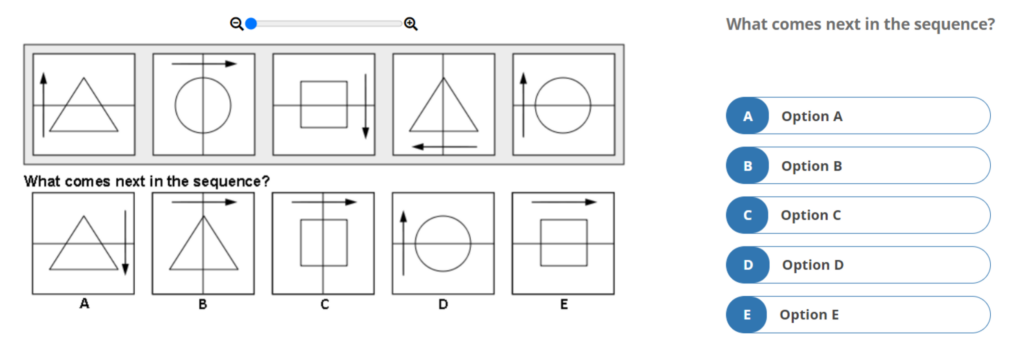
Diagrammatic Reasoning Test
Diagrammatic Reasoning Test requires candidates to use logical reasoning skills to interpret the patterns in a sequence to solve problems. Diagrams, flowcharts, and other visual representations of information are commonly used in diagrammatic reasoning assessment.
Here is an example of a diagrammatic reasoning test

Abstract Reasoning Test
Abstract reasoning tests use abstract shapes and symbols. It is used to assess a candidate’s ability to recognise patterns and relationships in complex sets of data without the assistance of visual representations.

Spatial Reasoning Test
This assessment measures the candidate’s ability to compare and analyse various 2D and 3D shapes to solve problems.
Spatial reasoning frequently demands the candidate to rotate and manipulate shapes in their head mentally and is used to evaluate abilities including spatial perception, mental visualisation, and spatial memory.

Critical Reasoning Test
In this assessment, the candidate’s ability to critically reason is measured using a variety of statements and questions around the information provided.
The critical reasoning test is to analyse the capacity of candidates to make judgements and solve problems by applying evidence and reasons.
Critical thinking abilities are regarded as an important talent for assessing decision-making capacity while under pressure.
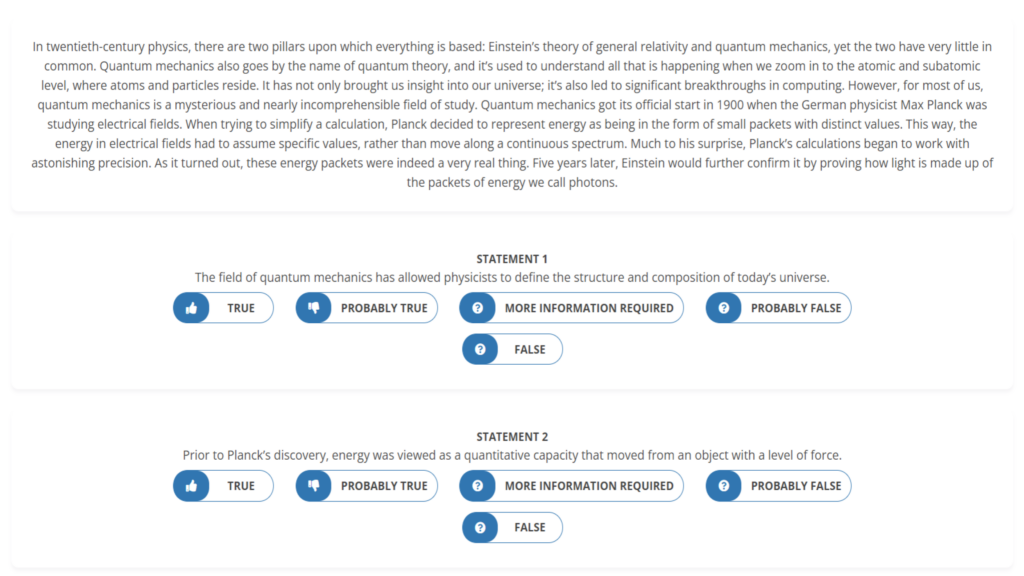
Situational Judgement Test
In this assessment, candidates are provided with likely scenarios and will be required to choose the best (and worst) decision options.
A Situational Judgement Test can give significant insight into how a candidate would react in certain work scenarios.
Specific soft skills, like leadership, responsibility, and time management, can potentially be measured through situational judgement assessments.
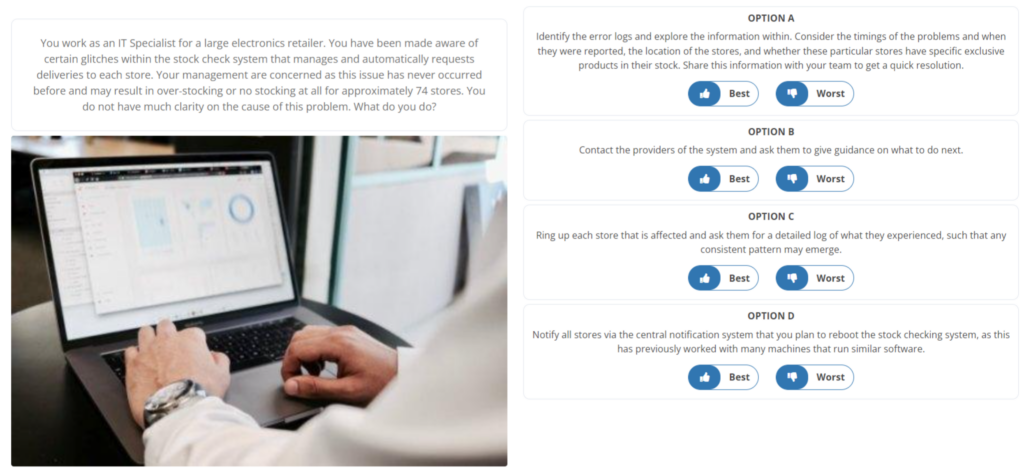
8. Why use Assess Candidates Aptitude Tests to Hire?
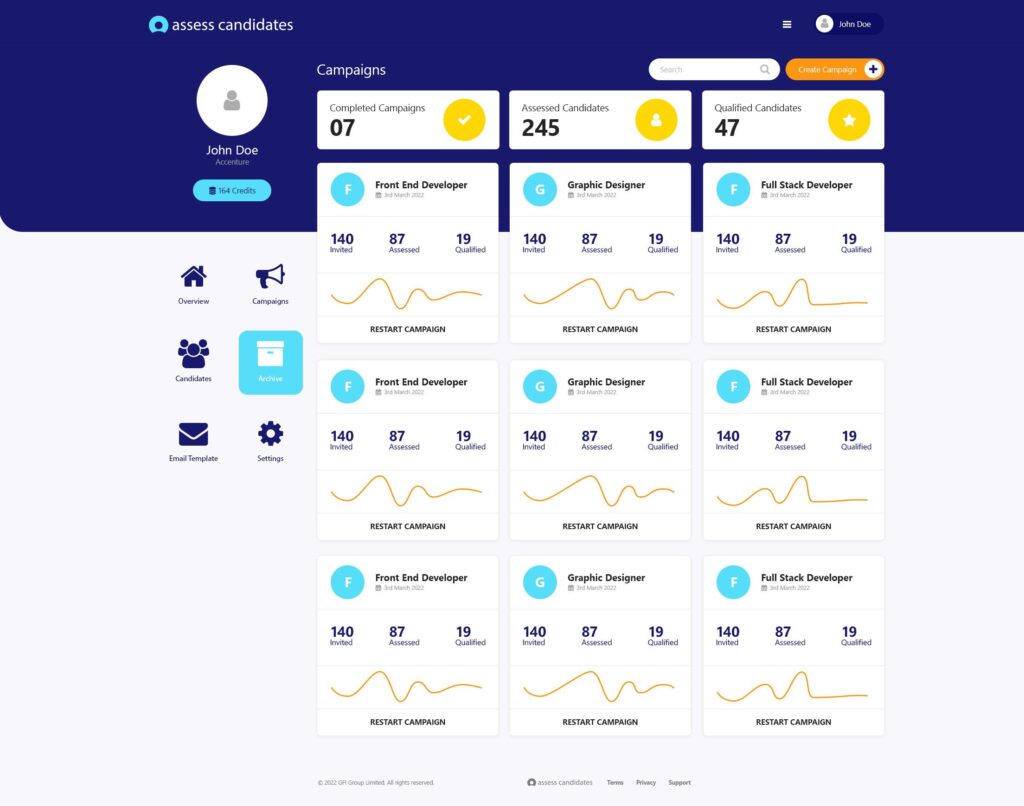
Here are the top four reasons to consider using Assess Candidates’ Aptitude tests for your hiring process:
- Designed by Experts: Our aptitude test platform is developed by chartered scientists, psychologists and psychometricians, which have undergone rigorous testing and validation to select top talent in multiple organizations
- Hiring Assessment Platform Compatibility: Assess Candidates’ easy-to-use hiring assessment platform allows employers to view candidate performance and make hiring decisions confidently with flexible criteria. Employers can easily shortlist candidates based on how well they performed in each psychometric test.
- Candidate Engagement: Assess Candidates’ engaging candidate experience to ensure that the tests are user-friendly and accessible from any device. The psychometric assessments will be delivered on a fully branded portal for a seamless experience.
- Easy Accessibility: Support for those with visual disabilities including; additional time, a zoom feature, and avoiding the use of certain colours and images, in line with the Web Content Accessibility Guidelines (WCAG) to allow for the use of screen readers.
In conclusion, by incorporating aptitude tests, recruiters can make informed decisions, improve the efficiency of candidate selection, and enhance the overall quality of their workforce. However, it is crucial to regularly validate and verify the effectiveness and accuracy of the tests over time. This ensures that the aptitude tests remain reliable and up-to-date, and continue to provide valuable insights for making hiring decisions.
In the following FAQ section, we will address some final queries that recruiters often have.
9. Aptitude Tests In Recruitment – FAQs
- Can aptitude tests be used for internal promotions or career development?
- Yes, aptitude tests can be beneficial for identifying existing employees’ strengths and areas for development, aiding in internal promotions and career growth opportunities.
- Are aptitude tests suitable for all types of job roles?
- Yes, aptitude tests can be customized and tailored to specific job roles and industries.
- How long does it typically take to complete an aptitude test?
- The duration of a combination of aptitude tests vary, but they are designed to be completed within a reasonable timeframe, usually ranging from 30 minutes to a 2 hours.
- Are there any legal considerations when using aptitude tests in recruitment?
- It is important to comply with local laws and regulations regarding the use of aptitude tests, such as ensuring they do not discriminate against protected characteristics and align with equal opportunity employment principles.
- How often should aptitude tests be updated or reviewed?
- Aptitude tests should undergo regular review and updates to align with evolving job requirements and to maintain their relevance and accuracy in predicting job performance.
- Can the Assess Candidates platform provide benchmarking data for comparing candidate performance against industry standards?
- Yes, the Assess Candidates platform can provide benchmarking data for comparing candidate performance against industry standards. The platform utilizes comprehensive data from a wide range of candidates, and industries also providing valuable insights into candidate strengths, weaknesses, and potential for success in specific job roles.
